
 |
|
#1
|
||||
|
||||
|
Hello Everyone,
I am just starting the build of a twin pair of Orchestra models, and I will share the process on the forum. These guitars will be shown at the Guitar festival in Padova, in may, and at the Fretboard Summit in Chicago, in august. Here's a first picture of the tone woods I am selecting: 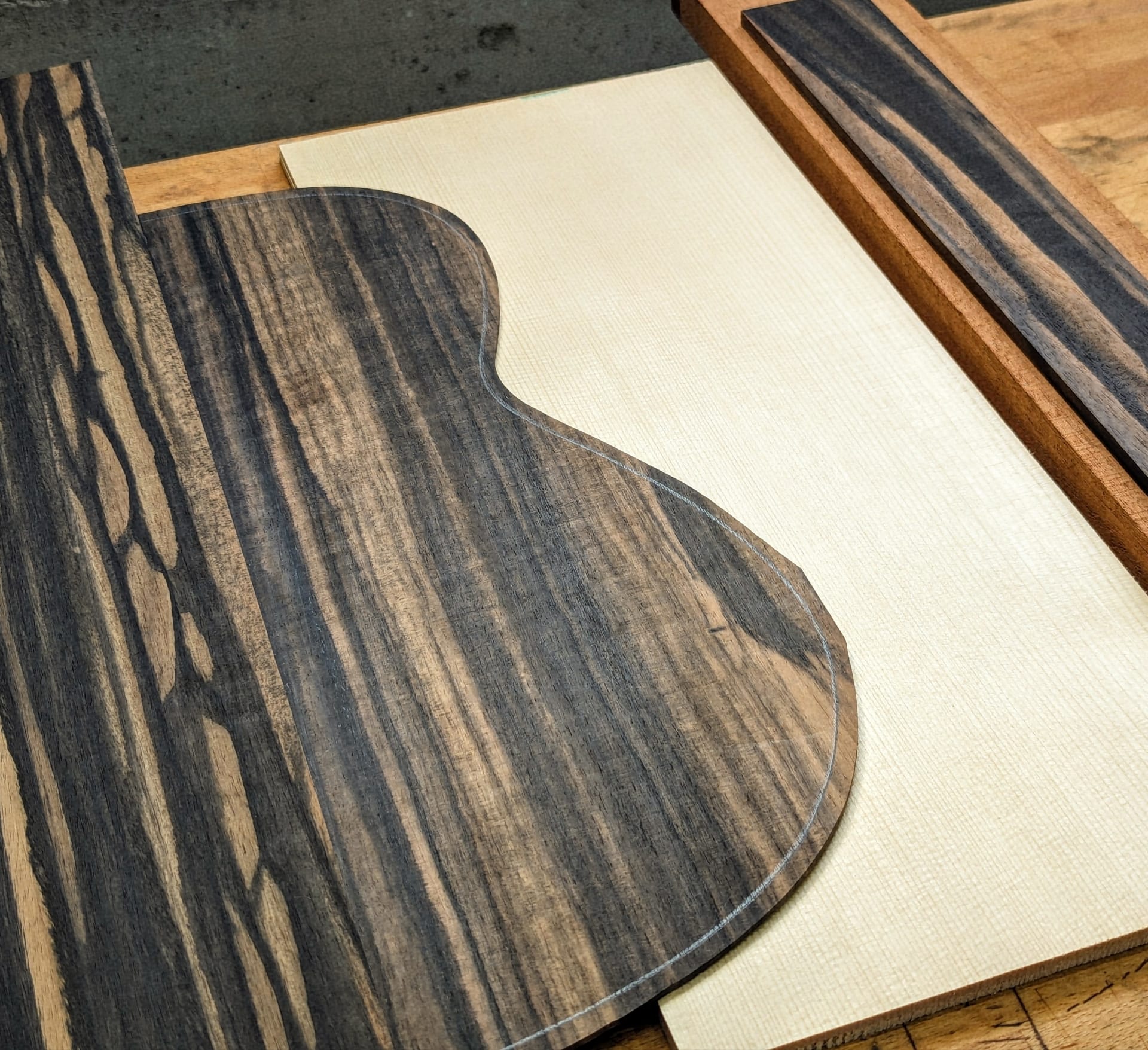 The Orchestra model: 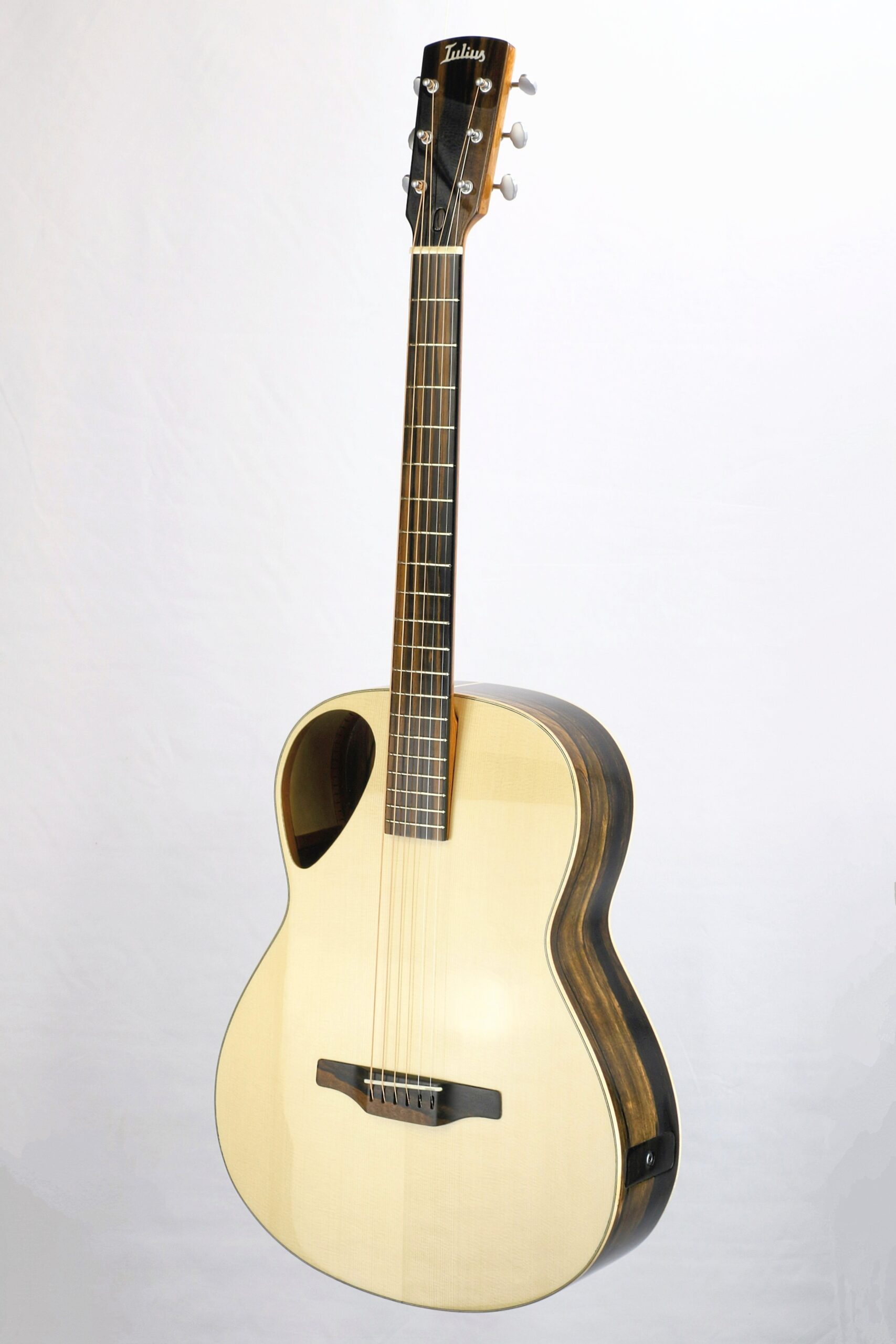 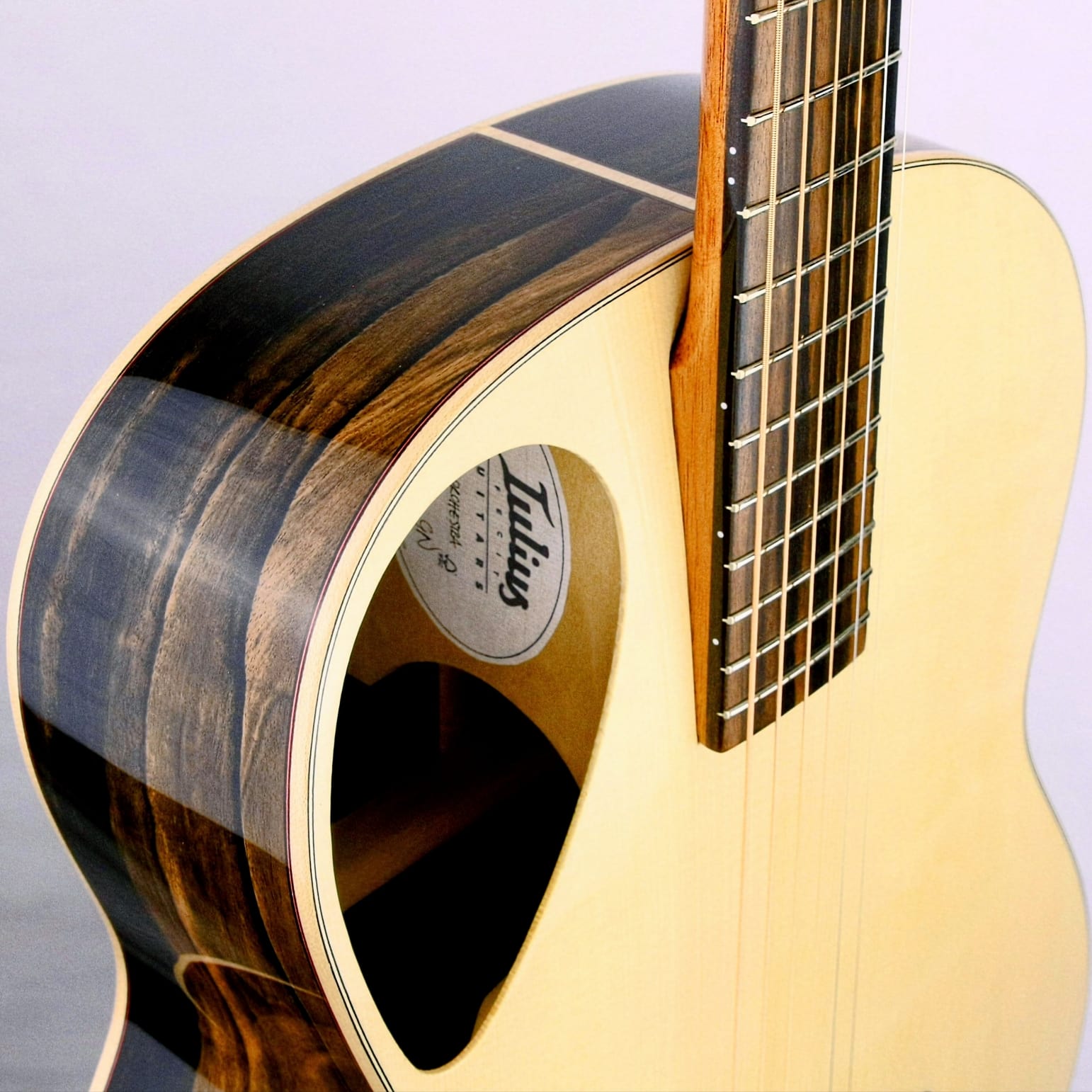 And here some more info about this model: https://www.iuliusguitars.com/orchestra/ I am preparing some info about the tone wood selection process, stay tuned! Cheers, Giuliano |
|
#2
|
||||
|
||||
|
Beautiful wood and an interesting neck attachment. I look forward to following along Giuliano.
|
|
#3
|
||||
|
||||
|
Quote:
Giuliano |
|
#4
|
||||
|
||||
|
Hello everyone,
Let's begin this adventure: first step of the build is the choice of tonewood; The system I developed to assess the qualities of tone wood materials is called the TPC suite (Tonewood parameters characterization), 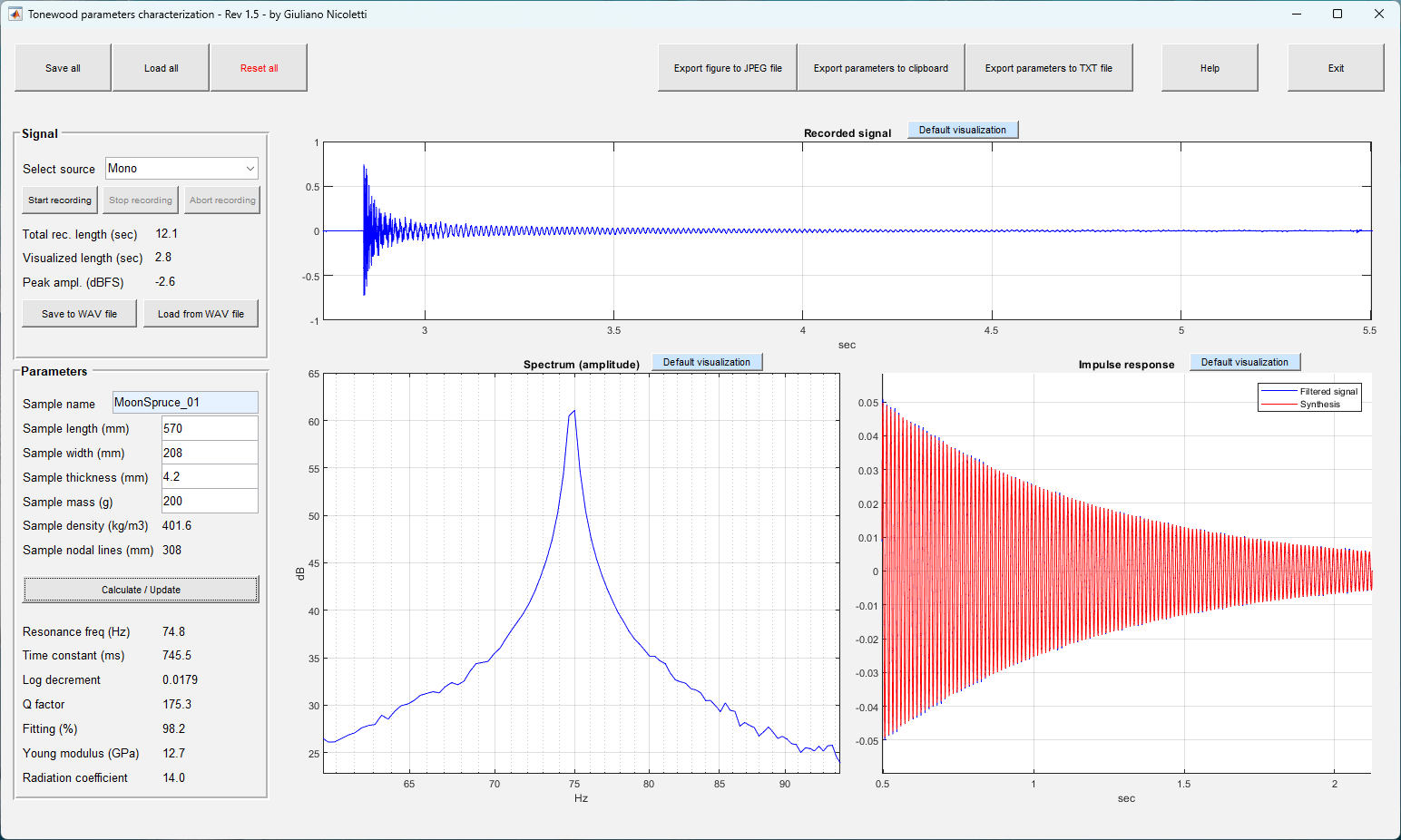 This system is pretty unique, as it allows to measure audio impulses of tone wood tap test and to calculate the main mechanical parameters of the sample, comprising the damping: - Density - Young’s modulus - Radiation coefficient - Q (quality) factor The parameters are calculated with the method of the free beam, with the sample usually excited on its first longitudinal bending mode, along the grains of the wood.  I use a dedicated jig to support the sample and excite the resonance mode without interfering on its oscillations; the quality of the excitation stimulus and the support jig have a strong influence on the consistency and precision of the results. 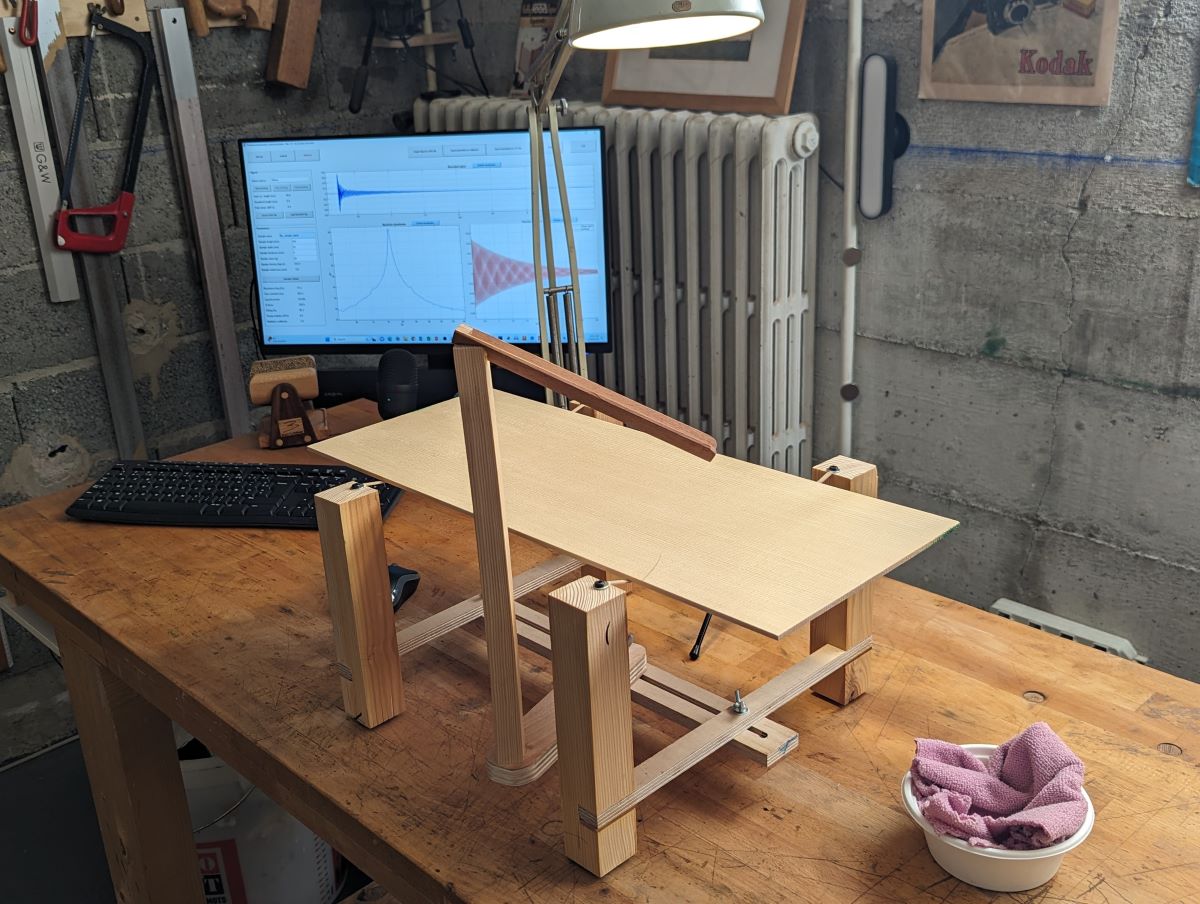 The excitation is generated then by a marble, that is left rolling over the edge of the sample, exciting its longitudinal bending mode in resonance. 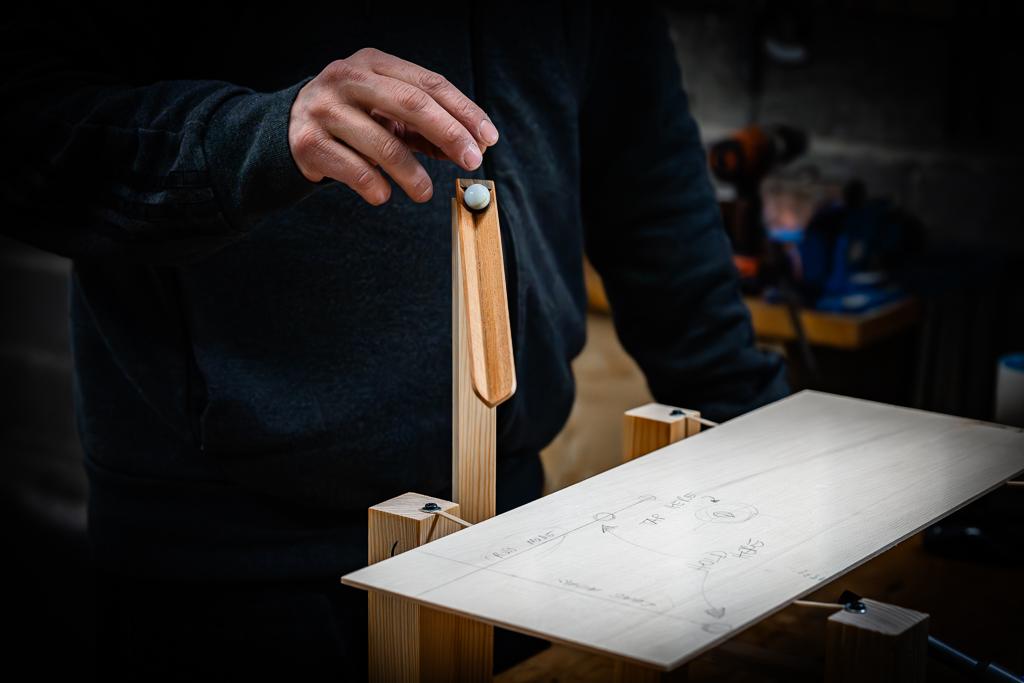 The microphone captures the impulse, and the software allows to calculate the main parameters: 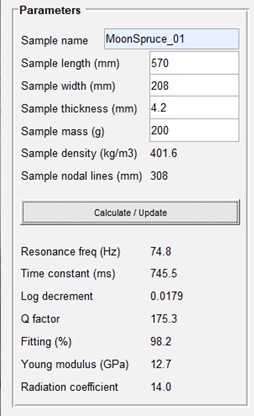 and export the parameters to an excel file, for simplicity of storage and analysis:  As you can imagine, this whole measurement process is the results of quite a long study of the most important and significant properties of tone wood, and their impact on the acoustic instrument. It is part of the conferences, webinars and trainings I hold for associations and professionals, and that is available under request (the software, also...). Just give me a couple days, and I'll be back on the matter... Cheers, Giuliano Last edited by Giuliano Nicoletti; 01-05-2024 at 01:30 PM. |
|
#5
|
||||
|
||||
|
Here's the French spruce from Jura mountains @le_bois_de_lutherie that I will use for one of the two Orchestra model I will build in the next months.
 Here are the main parameters:
This is a very stiff board, with density on the high side. Q factor is excellent, though, at 178: the board rings like a bell, also thanks to a very uniform disposition of fibers. Thickness of the table will be around 2.6mm, to partially compensate for the high density. A second twin instrument will be built with a different choice for the soundboard only, see you tomorrow for more details! 😊 Cheers, Giuliano |
|
#6
|
||||
|
||||
|
For the soundboard of the second Orchestra, the twin sister, I will use a different wood.
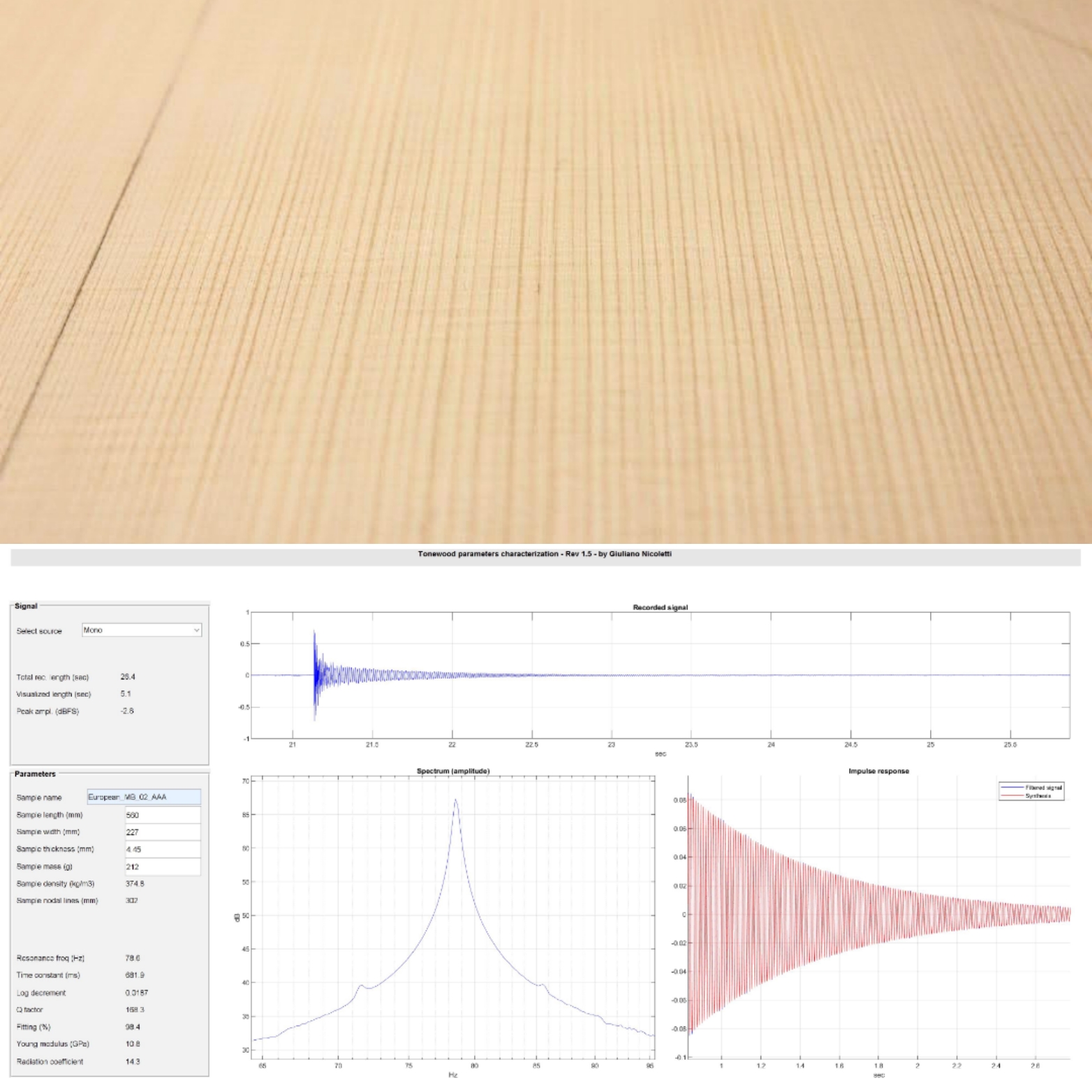 I selected this beautiful European spruce @maderasbarber and its main parameters are once again top of the notch, but with a different perspective. Let's have a look:
This wood is much lighter, less stiff, still with a very good Q Factor, and a very nice tap tone. Target thickness of the soundboard is slightly higher then, around 2.7mm, with also a slightly higher expected efficiency, and maybe more accent on higher order modes. Everything else on these two guitars will be identical (as much as possible). Let's keep on going! 🙂 Cheers, Giuliano |
|
#7
|
||||
|
||||
|
Hello everyone,
This is the wood I am going to use for sides and back of the twin Orchestras, a beautiful set of Crelicam ebony from Madinter. 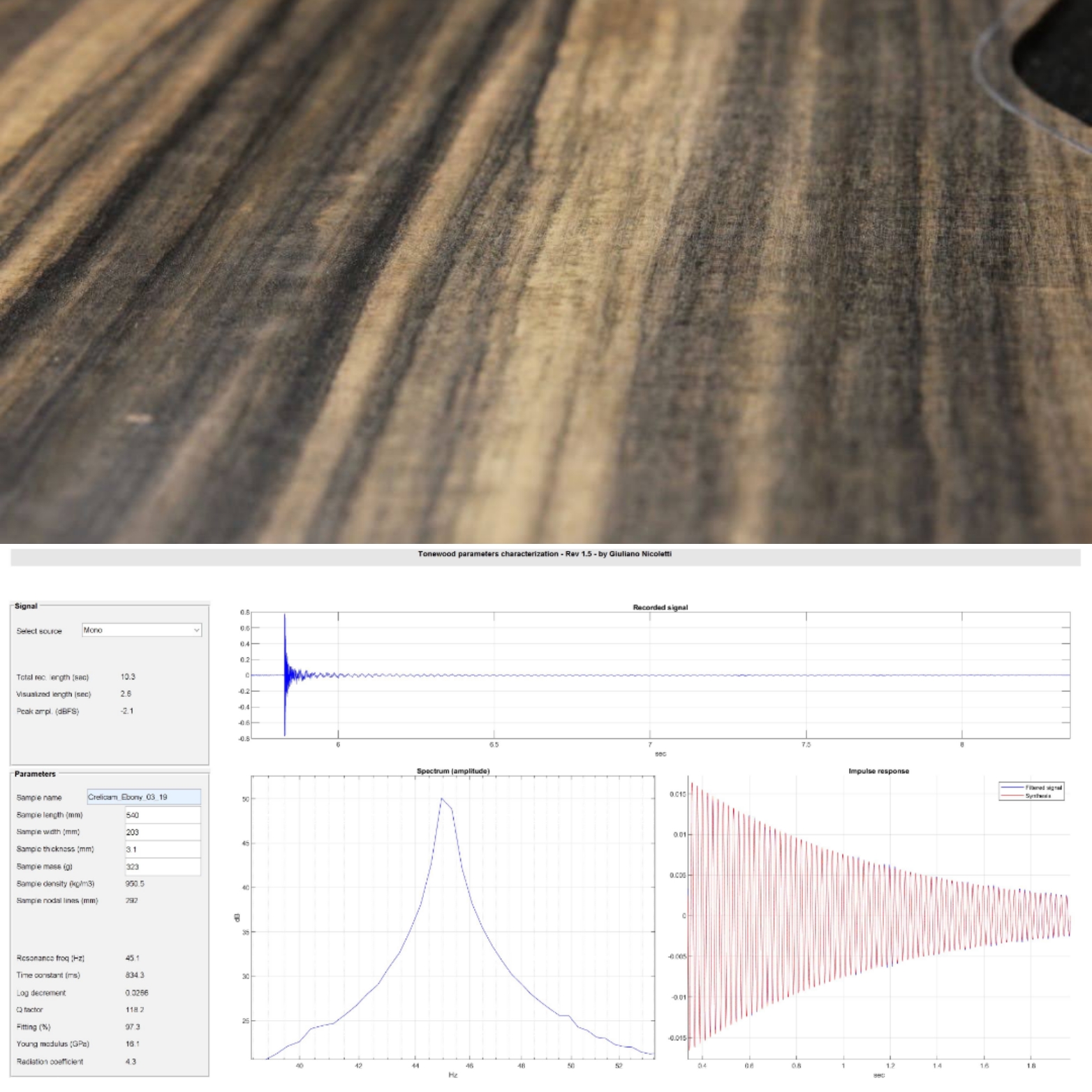 Here are the main parameters: Radiation coefficient: 4.3 Young's modulus : 16.1 GPa Density: 950 kg/m3 Q Factor: 120 Density is almost 3 times higher than spruce, therefore even with a very high stiffness, the radiation coefficient is very low. This comes handy, as it will reduce the mobility of the active back (as it is on the Orchestra model), and avoid absorbing too much energy from the soundboard monopole. This Ebony active back will be tuned around 214 Hz, and will add a touch of complexity to the tone of the guitar, on the midrange, leaving the soundboard monopole very dynamic, sensitive and projecting. 🙂 I have to say, I have the feeling I am talking to myself. Is there anybody out there interested in acoustic guitar design?  Cheers, Giuliano |
|
#8
|
||||
|
||||
|
I know that feeling well (feeling as if one is talking to one’s self!). I am sure that many are following along. Thanks for taking the time to share your process here…

__________________
A bunch of nice archtops, flattops, a gypsy & nylon strings… |
|
#9
|
|||
|
|||
|
I second iim7V7IM7's comment: while posting can feel like talking to one's self, we are out here following along!
I am fascinated by your TPC measuring process. How did you develop it? There is something both high and low tech about it; between the kind of Rube Goldberg-esque channel to drop the marble on the suspended wood plate and the graphs and charts that result from the marble "tap". It's quite ingenious! I am very curious about the heel-less neck and how it attaches to the body and how a future neck re-set might be handled. I am equally curious about how you brace the top in light of the off set sound hole. Does the baffle between the sound hole and the neck block (where your label is placed) affect the sound? I am looking forward to more of your posts. Don't give up!
__________________
Franklin Jumbo African Blackwood/German Spruce Franklin Dread Mahogany/Adirondack 1929 Martin 2-17 Last edited by mhw48; 01-07-2024 at 08:38 AM. |
|
#10
|
||||
|
||||
|
Quote:
|
|
#11
|
||||
|
||||
|
I enjoy following, but at a higher level. I don’t typically have the time for all of the technical details, nor the scientific education to understand them. However, it is great that you do and can apply such knowledge to your instruments. When completed, I would love to hear sound samples.
__________________
--------------------------------------- 2013 Joel Stehr Dreadnought - Carpathian/Malaysian BW 2014 RainSong H-OM1000N2 2017 Rainsong BI-WS1000N2 2013 Chris Ensor Concert - Port Orford Cedar/Wenge 1980ish Takamine EF363 complete with irreplaceable memories A bunch of electrics (too many!!) |
|
#12
|
|||
|
|||
|
Listening with great anticipation. This is fascinating.
|
|
#13
|
|||
|
|||
|
I'm definitely following along. It's nice to see some actual measurement of tonal properties rather than generalization, and see how some luthiers actually can take this into account. It's fascinating.
__________________
-- 2023 Fender American Performer Stratocaster 2023 Martin HD-28 |
|
#14
|
||||
|
||||
|
Hello everybody, These last few days I have been working on updating several details of the guitar design, therefore, not a lot of news on the build. I profit of this moment to give more details about this model and the possible options. Let's begin with the spec sheet of the Orchestra:
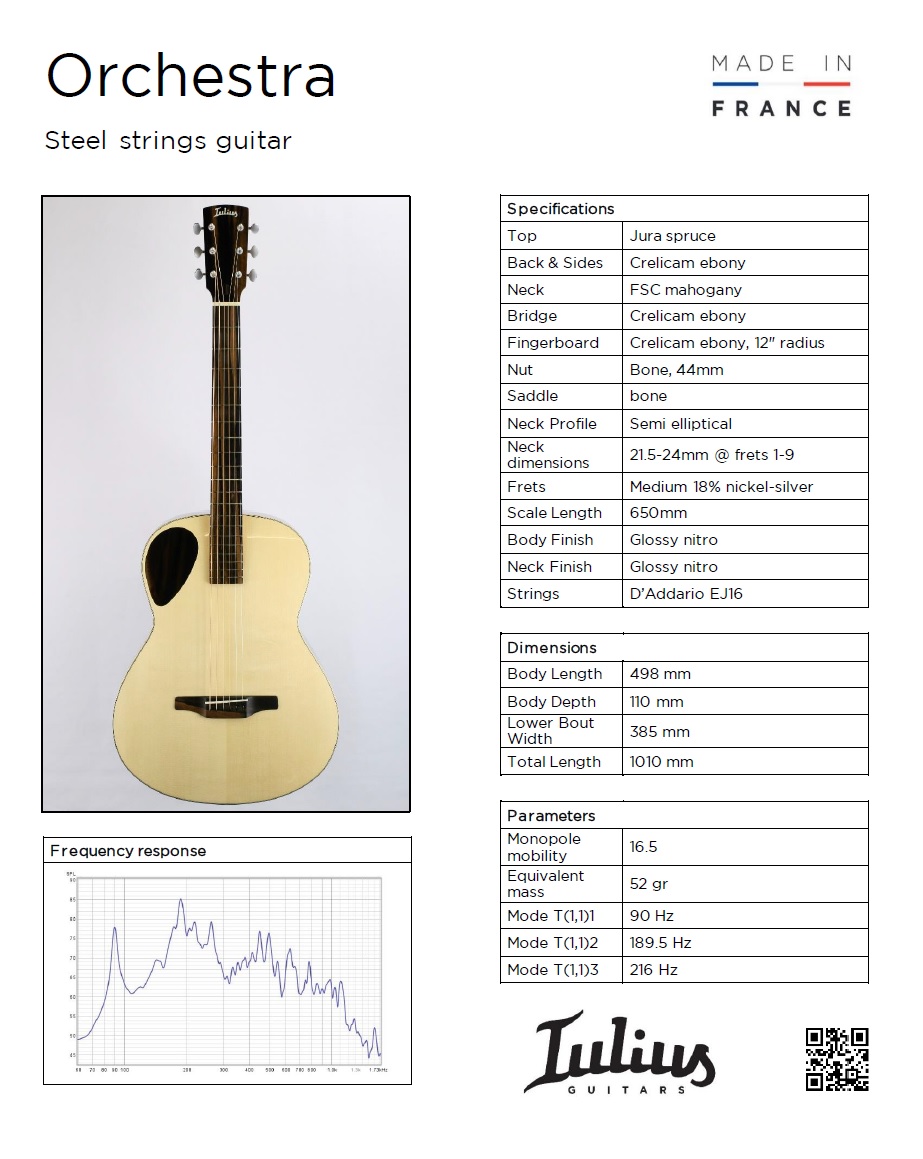 Dimensions are close to a standard OM model, and several details such as nut width and neck dimensions are usually defined with the customer. The choice of wood I propose is quite limited, by choice. I use Crelicam Ebony as a tropical tone wood for back and sides, fretboard, bridge. I love his acoustic and esthetical qualities, and I consider this wood a sustainable tropical resource. The second choice of tropical tone wood is of course mahogany. I use an American FSC certified source from Maderas Barber, a very serious European supplier, that has great mechanical properties (a must for the neck billet) and a very nice and consistent look. For necks, and if requested for back and sides. 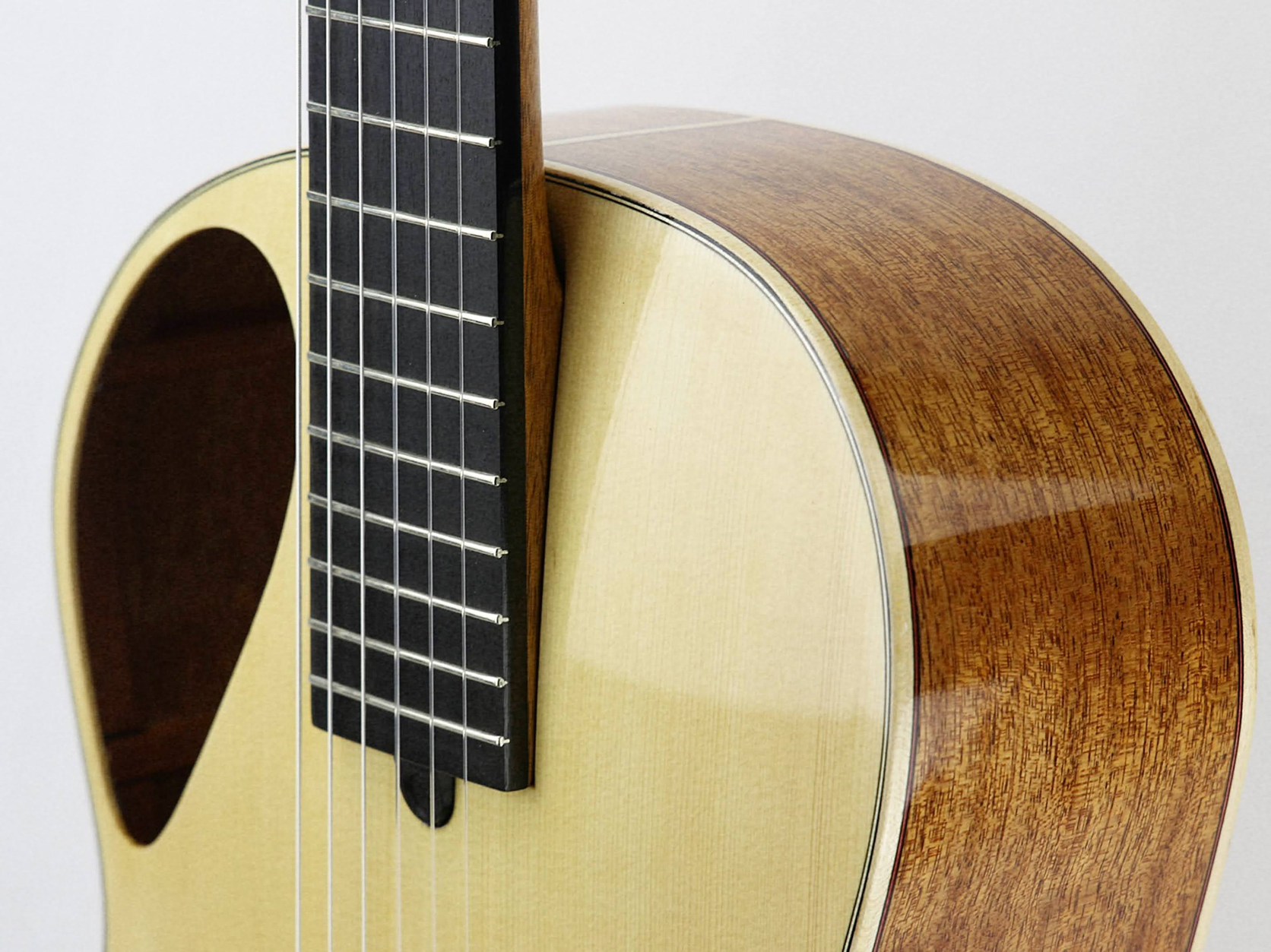 In this image above, from the crossover model "Seicorde", you can also see the table of European spruce from the French Jura mountains, supplied by the sawmill "Le Bois De lutherie", a small historic place that is very well known in France, and it's quite close to where I live (Saint Etienne). It's a great tone wood with very excellent sonical qualities: light, stiff, with an exceptional Q factor and a very nice look. I also like to stock European spruce from Maderas Barber; it can have very similar sonical qualities, and a second supplier of this precious material is securing my stock. Then I like to explore the possibilities that come from local tone wood sourcing. In Europe we have several possibilities, each one with different sonically accents and look. Maple, Walnut, Eucalyptus, Pear. I like a lot the Ash, with qualities in between maple and rosewood, and I am testing sets of spalted beech that looks very promising, with a great-looking, dense grain:  There are so many great alternatives to tropical tone woods, for both sonical and aesthetical excellence, and this is the offer that I am developing. Tone wood is becoming increasingly rare, and I believe that it's necessary to look for a new path. Working in Focal I have spent a considerable amount of R&D on new materials research, and fine tuning of actual technologies (Sandwich composites, flax fibers, beryllium...). I know that alternatives are possibles, and I believe it's important to begin discussing this topic in our industry (yes, it's already happening...) Eventually, I like to think that a big part of the beauty of my instruments comes from the design, and that I am able to master their sound with technical choices and the design solutions I developed in the years (more about this in the future). In the next days I will come back with more details about the technical part of the spec sheet, with frequency response and main parameters. Cheers, Giuliano |
|
#15
|
||||
|
||||
|
Hello everyone;
Here the main parameters of the Orchestra model: Monopole mobility: 16.5 Equivalent mass: 52 gr Mode T(1,1)1: 90 Hz Mode T(1,1)2: 189.5 Hz Mode T(1,1)3: 216 Hz And its frequency reponse: 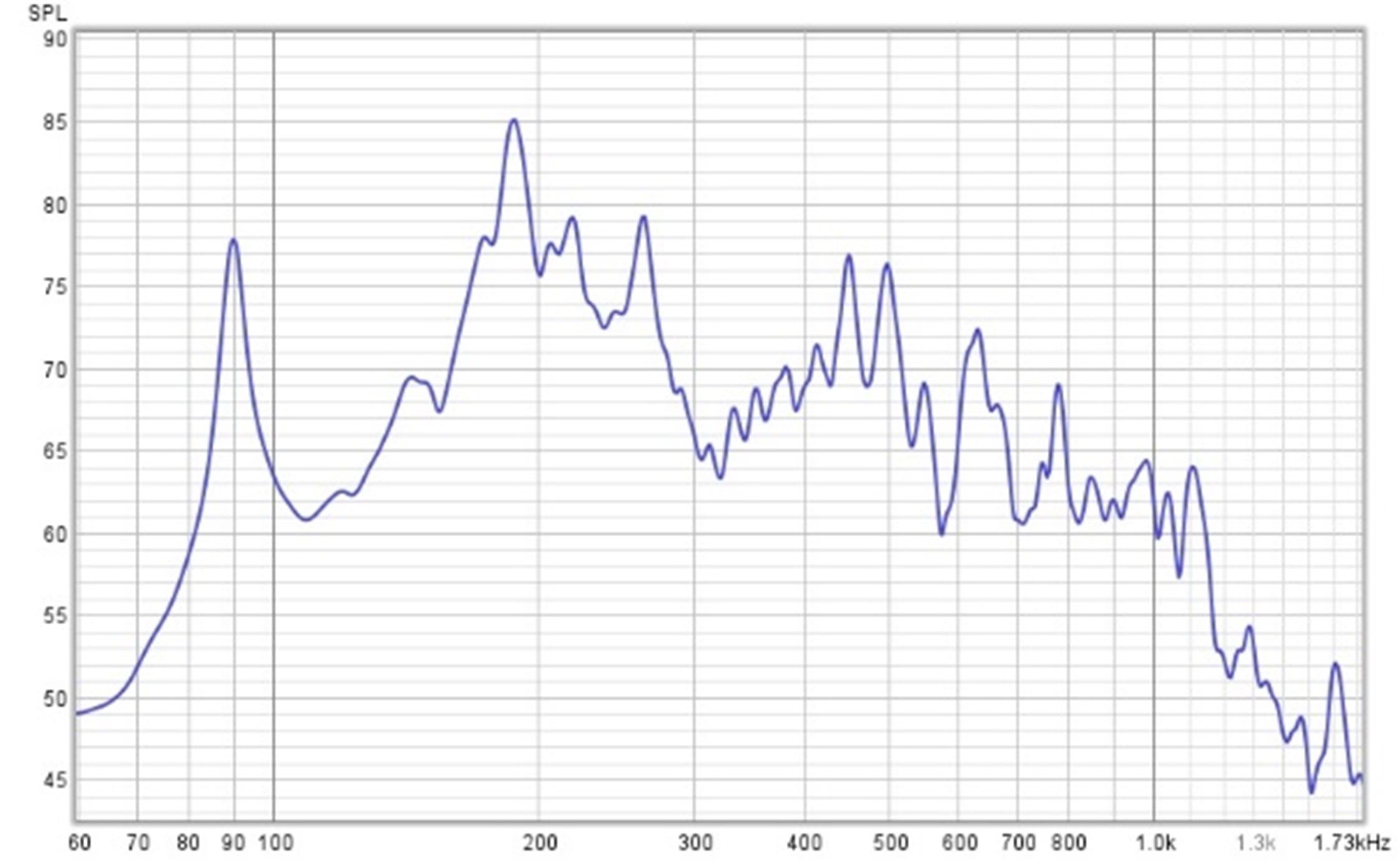 I will talk more in the future about the new hybrid "T" bracing design, today let's focus on the monopole mobility of 16.5, which indicates a very efficient soundboard for an all-wood bracing system (just 52gr of equivalent mass). The response is delicate and expressive, yet the instrument is ready to be flat picked without entering too quickly in a saturation zone. The first mode is at 90 Hz, for a full bodied sound on the first notes of the sixth string, while the monopole at 190 Hz ensures a nice projection on the midrange without sounding muddy or nasal. A lot of sparkling and overtones are ensured by the higher order modes, very evident around 300-900Hz. The back is also bringing color and tone with a smooth presence around 214 Hz without absorbing too much energy and dynamic. All main modes are perfectly placed between notes, to avoid wolf tones. The Orchestra is designed and built to be a versatile and engaging instrument, on a large palette of styles. Comfortable to be played thanks to the overhang neck and the missing heel, simple to be serviced and kept in tune using the ETS system. I understand that a lot of this info requires further details, but it's impossible to describe everything at the same time; I will use the story of these builds to focus each time on a different detail. Just a final note: I understand that a list of data, frequencies and specs might look a bit dry, and take out the magic from the description of an emotion, the sound of an instrument. I know very well that the only thing that really matters is the experience of playing the instrument. My everyday struggle, as the artisan that builds the instrument, is to look for the relationship between the objective and the subjective data, to tranform all of these inputs into useful info to get closer and closer to the sound - the experience - I am looking for. And eventually play my guitars and just loose myself into its sound, and the feeling of play. The relationship between the musician and the instrument is an alchemy that will never be fully described by some data. That's what creates this magic, and this is also the reason why I know that a perfect instrument will never be built, and that I will keep going on looking for it, over and over again... Cheers, Giuliano |